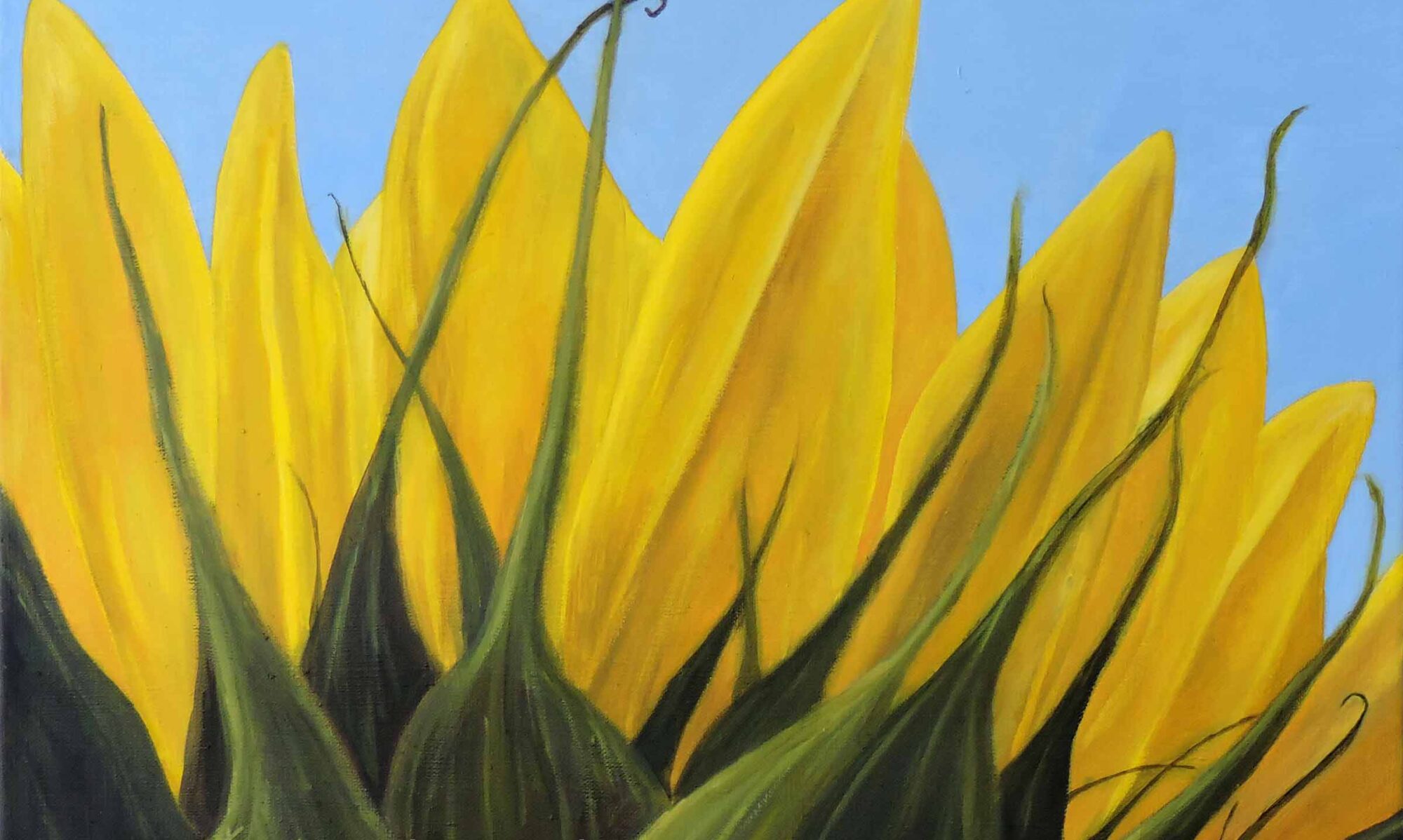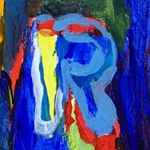
RABATMENT OF THE RECTANGLE | RYB
Quick links to more art terms and definitions are located at the end of the list.
Rabatment of the Rectangle
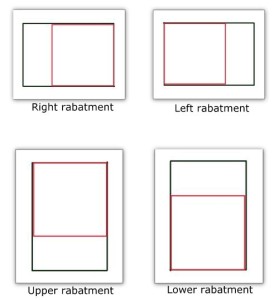
A compositional technique that arranges elements or divides space within a rectangle to form a perfect square. This method can be applied to any rectangle, allowing for a right or left rabatment in landscape rectangles, and an upper or lower in portrait rectangles. Key elements of the composition are positioned within these squares to establish a focal point. This approach improves the aesthetic quality of artworks by positioning the center of interest away from the middle of the canvas.
Rabbet
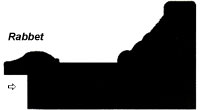
(Pronounced like “rabbit.”)
The recess or groove cut all around the perimeter of the frame. It serves as the housing for the artwork, providing a secure space for various framing components. Within a picture frame, the rabbet holds these essential elements:
-
- Artwork: The actual painting, photograph, or print.
- Matting: The mat that surrounds the artwork, creating a border and separating it from the glazing.
- Glazing: The protective glass or acrylic that covers the artwork.
- Backing: The material behind the artwork, providing support and stability.
Radial Balance
Refers to the arrangement of visual elements around a central point. This arrangement adds depth, evokes movement, and creates a focal point in an image. Think of a mandala or a sunflower. The central point acts as the fulcrum, ensuring stability while maintaining visual interest. Also see Balance.
Radial Symmetry
(Also known as rotational symmetry.)
Occurs when an artwork’s composition is symmetrical around a central point or axis. Imagine an object that you can rotate in any direction around its center, and no matter how you turn it, the overall arrangement remains the same. In other words, radial symmetry involves evenly spreading the visual weight of elements around that central point. Radial symmetry is found both in art and nature.
Characteristics include:
-
- Central Focal Point: Radially balanced compositions have a clear central focal point from which other elements extend outward.
- Multiple Directions: Unlike strict geometric symmetry, radial balance doesn’t demand perfect mirroring. Instead, it balances elements in multiple directions.
- Natural Harmony: When done well, radial symmetry creates a sense of natural harmony and equilibrium.
Realism
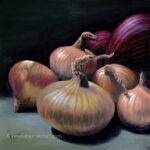
A style of art most people consider to be “real art.” This is because it attempts to depict the topic as it appears in real life but stops short of appearing like a photograph. Realism is art without stylization or following the rules of formal artistic theory. Instead, the artist spends a fair amount of time and effort paying attention to creating an accurate depiction of life forms and objects, perspective, good composition, lights and darks, and color and tone.
Receding Colors
(Opposite of advancing colors.)
Refers to hues that visually appear to fall back or retreat in a space, creating an illusion of depth and expanse. Receding colors are typically found on the cooler side of the color wheel, including shades of blue, green, and purple. When used strategically, they create a sense of depth or distance within an artwork. Cool colors evoke feelings of calmness, tranquility, or even a touch of melancholy.
Recycled Art
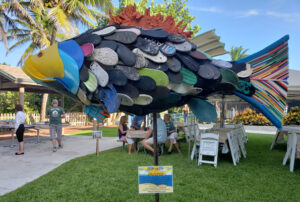
Contemporary works of art made from garbage, discarded items, or found objects that once had another purpose. Such items include plastic shopping bags, food containers, old plastic toys, vehicle tires, fabric scraps, bicycle parts, car parts, clothing, footwear, etc.
Red

One of the three primary colors of pigments used in painting, and the complement or opposite of the color green. In painting, red is used to create a multitude of colors when mixed with other hues.
Reference Photos
A collection of images used by visual artists for inspiration and composition. They can be of any living or inanimate object, place, animal, plant life, or individual. They are useful when it’s impossible for the artist to be there in person to physically observe the subject matter they want to paint or draw.
Reflected Light (in art)
The light that bounces off one object and strikes another. It adds depth and variation to an object, creating contrast in dark or uninteresting areas. Additionally, it can lighten some areas of the shadow, giving the shadows more depth and subtlety Understanding reflected light is essential for achieving a sense of three-dimensionality in artwork, whether drawing or painting. Also called bounced light or indirect light.
Relative Apparent Size
An optical illusion where distant objects appear smaller than those in the foreground due to our perception of depth and distance. When we observe a scene, our brain considers the relative sizes of items. If there are two objects that are the same size, the one closer to us will appear larger because it occupies more of our visual field. This phenomenon is crucial for artists to comprehend if they want to a create a sense of depth and spatial relationships in their compositions.
Relative Position
Refers to the position of objects relative to an imaginary line formed by our line of sight. We have a tendency to view items from our own eye level; objects in the foreground (or closest to us) appear on a lower plane, while distant objects appear on a higher plane. This is a notion that artists must understand if they wish to create a sense of depth and spatial relationships in their works.
Religious Art
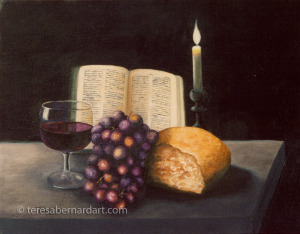
(Also called Sacred Art.)
Any form of artistic representation that uses religious inspiration to convey a message aimed at spiritual upliftment. It can be a sacred story or a profession of the artist’s faith, encompassing any set of individual beliefs, whether Christian or non-Christian.
Renaissance Art
(Italian for ‘rebirth.’)
Refers to the paintings, sculptures, and decorative arts from the European historical period known as the Renaissance. Originating around 1400 AD in Italy, the Renaissance was a significant period in European history, characterized by cultural and intellectual shifts in philosophy, literature, music, science, and technology. It transitioned from abstract forms to representational styles, depicting biblical scenes, portraits, classical motifs, and current events. Drawing inspiration from classical antiquity, it emphasized realism and human nobility, echoing the art of the Greek and Roman empires. Notable Renaissance artists include Leonardo da Vinci, Michelangelo, and Raphael, known for iconic works like the Mona Lisa and the Sistine Chapel ceiling.
Rendering
An important process in art that involves creating a realistic representation of a figure, object, or scene using a variety of methods. In conventional art, rendering entails painting with lines, shapes, and colors, whereas in digital art, it entails finishing a piece with computer effects. This step entails working on lighting, shading, and adding details and textures. In both conventional and digital art, rendering improves the quality of a drawing by making it more visually appealing. Shading, lighting effects, and simulated shadow/reflection are among the techniques used. Finally, rendering adds depth and reality to the artwork, making it a useful tool in the art industry.
Repetition
A design principle that involves reusing an element or a series of similar elements—colors, patterns, fonts, images, textures—throughout a design, either regularly or irregularly. See Good Design Principles.
Representational Art
An artistic style in which the artist aims to depict real-life subject matter that is recognizable to the viewer, but with varying degrees of abstraction. Unlike non-representational art, which doesn’t portray specific subjects or scenes from the real world, representational art directly represents something tangible. It can range from highly realistic depictions to less detailed interpretations. It is closely related to Figurative Art; however, differences exist.
Reproduction
A copy or replica of an original fine art piece. Reproductions can be created through various methods, such as printing, casting, digital copying, or even reproduced using the same medium as the original.
The purpose of reproductions is to allow more people to own and appreciate a piece of art that might be too rare or expensive in its original form. However, it’s essential to note that reproductions typically do not hold as much value as the original artwork. They are often used for educational purposes, public displays, or as decorative pieces.
RGB
An acronym that stands for Red, Green, and Blue. RGB is a color model used to specify colors in digital images and computer graphics. It uses three numbers, each representing 8 bits with integer values ranging from 0 to 2552, to indicate the intensity of the red, green, and blue colors.
Rhythm
Refers to the way visual elements are repeated or organized to create a sense of movement, flow, and order. Rhythm is achieved through the deliberate repetition of specific design elements within an artwork. These elements can include lines, shapes, colors, values, textures, or even patterns.
Rhythm gives structure to the viewer’s experience, guiding the eye from one element to the next, creating a visual journey. Through the repetition of elements, rhythm brings unity to a piece of art. It creates a sense of predictability and consistency. Artists can use rhythm to emphasize specific areas or objects within the composition. See Good Design Principles.
Rich Black
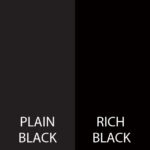
A term used in printing to describe a black ink mixture that includes certain percentages of cyan, magenta, and yellow in addition to black. Plain black is 100% black ink and often appears dull and lacks a certain depth. Whereas rich black results in a darker, richer tone of black. The mixture is often 60% cyan, 40% magenta, 40% yellow, and 100% black, although the percentage can vary.
Right Brain
Refers to a theory in which the brain’s right hemisphere is the center of creativity, governing art and spatial awareness. In contrast, the left hemisphere is tasked with reading, verbal communication, and mathematical operations.
Round Art Brush
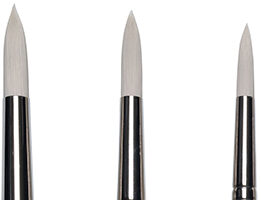
A traditional brush shape with a round or pointed tip in a round ferrule. The long hairs have large bellies and taper at the ends. They are ideal for sketching, outlining, detailed work, controlled washes, and filling small areas. Use one to create thin to thick lines that widen as you press down. This brush can hold a lot of paint for thick, large, and bold strokes. Thin, delicate marks are also possible if the pant loaded to the belly is thin. Rounds are most often used for small details and line work.
Rule of Odds
A compositional principle that suggests a composition with an odd number of elements is more captivating than one with an even number. Specifically, arrangements with three or seven elements tend to be visually appealing and balanced. Having an even number of elements tend to create symmetries that may appear monotonous. Here’s why this principle matters:
Dynamic Balance: When we encounter an odd number of elements—whether it’s three tulips in a vase or seven rocks in a landscape—the composition feels more harmonious. Odd numbers create tension, drawing the viewer’s eye and encouraging exploration. The brain doesn’t easily pair them up, so we linger, appreciating each individual element.
Visual Engagement: The Rule of Odds makes the viewer’s brain work a little harder. It invites us to move between the elements, seeking patterns or relationships. Whether an artist is arranging objects in a still life or composing a photograph, odd numbers add intrigue and depth.
Rule of Space (in art)
A technique that creates a sense of motion or activity in a composition by creating a negative space relating to the focal point. For example:
-
- When painting a portrait, if your subject is not looking directly at you, leave some negative space in the direction the eyes are looking, even if they are looking at something off-canvas.
- When painting a moving object, such as a runner or vehicle, placing negative space in front of the runner or object rather than behind creates a sense of direction or the implication of an eventual destination.
- If your subject is pointing at something or aiming at an object, place some negative space where the subject is pointing or aiming.
Rule of Thirds

A strategy used by professional photographers to aid them when composing the subject matter of their photographs. Painters can use this efficient technique as well. This technique involves dividing the painting surface into nine equal sections and placing the essential elements of the composition along these lines or at their intersections.
Using the rule of thirds ensures that a painter’s composition will not be visually split in half, either vertically or horizontally. It also prevents the main subject from being centered, which would create a bull’s-eye effect and cause the remainder of the painting to be overlooked. Rather, it leads the viewer’s gaze to the focal point and then guides it throughout the artwork, creating a seamless transition from one element to another.
RYB
Stands for Red, Yellow, Blue—the three primary colors from which all other colors can be created by mixing them together in various combinations. The RYB color model is primarily used in art and design. Artists blend these primary colors to create a vast spectrum of secondary and tertiary colors, each with its own unique character and mood. Also see Primary Colors.
You May Also Like
This art encyclopedia is provided as a valuable resource for art enthusiasts. If you like the information here and find it helpful, please consider purchasing a painting. Your support helps to cover the cost of keeping this art encyclopedia online. Simply click or tap the thumbnail link of any Teresa Bernard oil painting to view additional details.

12″ w x 16″ h
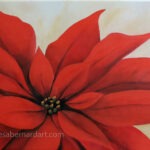
(2023)
12″ w x 9″ h
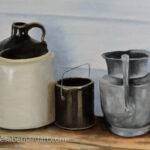
(2021)
12″ w x 9″ h
Art Glossary Quick Links
Contributing to The Art Dictionary
The art encyclopedia is a work in progress. New terms and definitions are added on a regular basis. If you know of an art term and definition that isn’t already listed in it, but you believe it should be, send it to us and we’ll consider adding it. We’ll let you know if we do. Thanks!
Thanks for reading this!
